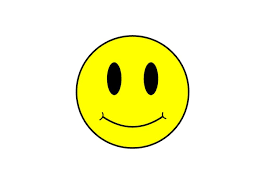How to Create an Original Joke
This article is brought to you by the Generator.
Writing a joke takes some mental and physical tools. Although it's not necessary to wear special writing undies, you can't hurt with a little prayer to Bill Hicks. Jokes are broken down into three parts: the set up, body, and punchline. The set up is the intro and body of the joke, and the punchline is the conclusion, coda, or outro. When writing a joke, keep the following elements in mind:
Humor is all around us
Humor is all around us. We may not realize it, but we are constantly bombarded with humor. It's not just funny to watch; it's also good for us! We can use humor in a variety of situations - from passing a test to being passed over for a job. The trick is to find the irony in whatever situation you find yourself in! Here are some ways to make everyday life more enjoyable.
People who find humor funny are likely to be in a positive mood. The mood of humor can be directly related to how we interact with other people. People engage in humorous activities more often when they feel happy or less threatened. This is also true for children. Humor is often triggered by our own experiences, but it also comes from the presence of another person in our lives. Humor is a natural and uplifting emotion. It helps us to deal with difficult situations.
In addition to making us laugh, humor helps us stay resilient in life. It helps us cope with difficult situations and teaches us to avoid painful emotions. When we laugh, we mask our hurt, anger, disappointment, or fear by laughing. And that laughter can help us to feel better. If we're ever in a bad mood, we can always get your friends to laugh with us. It's important to be able to laugh at ourselves and others.
It's a pared-down form of storytelling
The art of writing a joke can feel intimidating and elusive. It is important to remember that a good joke is structured like a story, with a beginning, middle, and end, and a conflict that is resolved within a few sentences. You can make a good joke even simpler by taking a few storytelling principles and modifying them to fit the structure of a joke.
It's based on self-referentiality
A self-referential joke refers to the same thing as itself. The joke can't refer to a larger class of jokes. This is sometimes referred to as meta-humour, a type of satire that pokes fun at itself by replacing a punchline with a serious alternative. It exposes a basic criterion for a joke's definition. Mitch Hedberg made a popular example of metahumour in his novel, "The Paradox of Humour."
A classic example of self-referential humor involves three people of different nationalities walking into a bar, with two people saying and doing smart things and the third person acting stupidly. These three people behave stereotypically, yet are unaware of their surroundings. But such a joke would be unsatisfying if it were not self-referential. In order to make a self-referential joke, you must use a form of metafictional humor to make your target audience laugh. For example, if the game was a story with adventure games, metafictionality is a way to point out adventure game tropes.
It's based on personal experiences
There are many things you can use as fodder for a joke. Observational humor has worked wonders for many writers, including Larry David and Jerry Seinfeld. By writing a story based on your own experience, you will guarantee an original joke. After all, who doesn't want to laugh at something they've experienced? After all, what could be more original than a story about a time they felt embarrassed about?
It's based on breaking the fourth wall
In the movie "Happy Heroes," a scene in which Big M. comments on the play, "He has this brilliant idea of sabotaging the school play by making a machine that scatters banana peels!" is one example of a funny break from the fourth wall. The audience laughs, but older people cringe. The joke works because the audience can tell it.
Breaking the fourth wall is a popular way to break the illusion that you're in a fictional world. The audience never knows that you're watching their every move, so it can be a fun way to make them laugh. Breaking the fourth wall is a great way to get the audience's attention, while simultaneously frustrating the audience. It can also be a good way to add a memorable moment to your story.
Despite its controversial nature, breaking the fourth wall has a long history in movies, TV, and comic books. Popular comedy shows and movies still rely on this technique. It allows characters to talk directly to the audience and adds another layer of comic effect. By breaking the fourth wall, Rob is engaging with the audience and gives us a better look into his psyche than the other characters.
Several common examples of breaking the fourth wall are Leaning on the Fourth Wall, Camera Abuse, and Interface Screw. Each of these examples shows that characters are trying to reach the audience and break the fourth wall without the audience's knowledge. Breaking the fourth wall can also be funny for an audience. However, it's essential to be aware of the audience's reactions. You can even make the audience laugh if you're genuinely worried that the characters will get harmed.
What are your thoughts on How to Create an Original Joke?
Share your thoughts in the comments below: